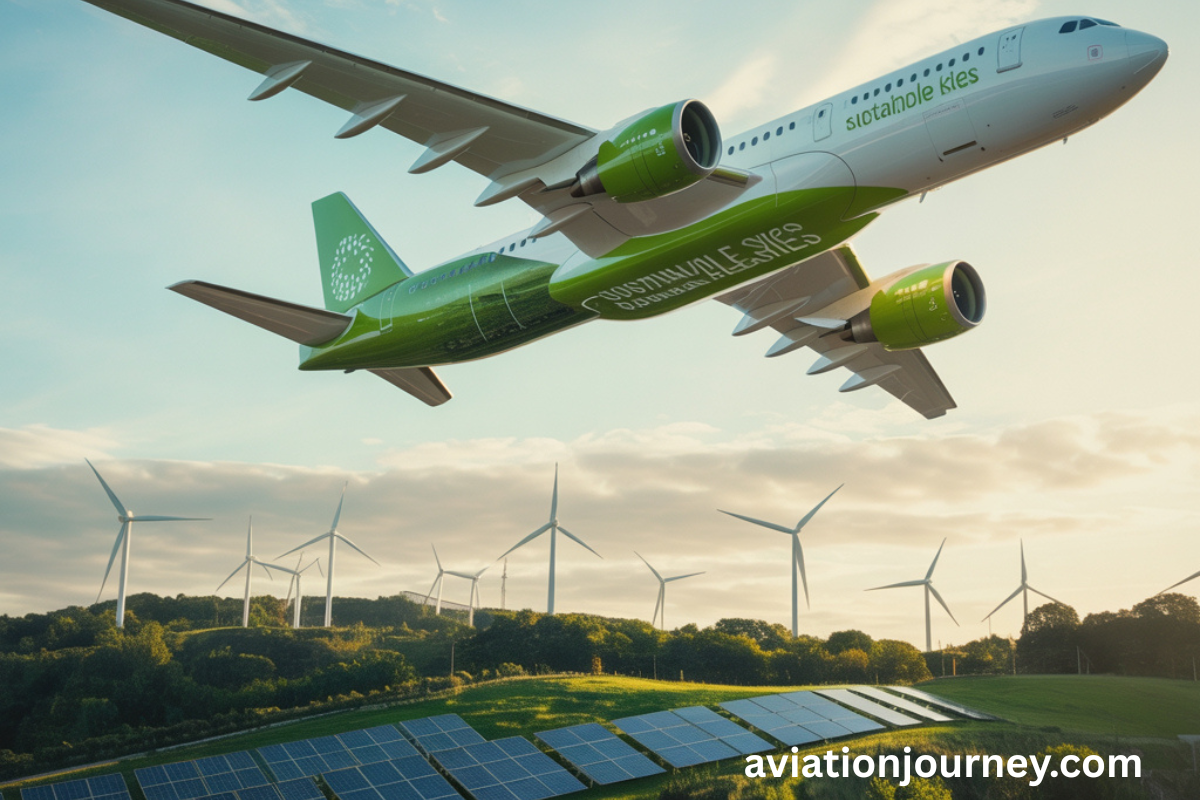How Aviation is Fighting Climate Change
Aviation connects the world, but it also contributes around 2–3% of global CO₂ emissions. As climate change becomes a pressing global challenge, the aviation industry is under increasing pressure to reduce its environmental footprint. The good news is that airlines, manufacturers, and regulators are actively working on innovative solutions. From sustainable aviation fuels (SAF) to electric planes and AI-powered flight paths, aviation is fighting climate change in remarkable ways.
🌱 Sustainable Aviation Fuels (SAF)
One of the biggest game-changers in reducing aviation’s carbon footprint is Sustainable Aviation Fuel. Unlike traditional jet fuel, SAF is produced from renewable resources such as algae, waste oils, and agricultural byproducts. Studies show that SAF can cut lifecycle emissions by up to 80%. Major airlines like United, British Airways, and Lufthansa are already flying with SAF blends, proving it’s a scalable solution for greener skies.
⚡ Electric and Hybrid Aircraft
While SAF addresses existing fleets, the future of climate-friendly aviation lies in electric and hybrid planes. Companies like Airbus and startups like Eviation are developing electric aircraft capable of short-haul flights. These planes promise zero direct emissions and significantly lower noise pollution. Hybrid designs, which combine electric propulsion with conventional engines, are also being tested to reduce fuel burn.
🤖 AI & Smarter Flight Operations
Technology plays a huge role in aviation’s fight against climate change. Artificial Intelligence (AI) and Big Data are being used to optimize flight paths, reduce fuel consumption, and minimize delays. For example, rerouting around turbulence or optimizing take-off and landing speeds can save thousands of liters of fuel per flight. Smarter air traffic management could cut emissions by up to 10% globally.
🛫 Lightweight Aircraft Design
Aircraft manufacturers are also focusing on lightweight materials such as carbon composites. A lighter plane uses less fuel, directly reducing emissions. Boeing’s Dreamliner and Airbus’s A350 are prime examples of fuel-efficient aircraft designed with sustainability in mind. These models burn 20–25% less fuel compared to older aircraft.
🌍 Offsetting & Green Airports
Airlines are introducing carbon offset programs, allowing passengers to balance out emissions by funding renewable energy or reforestation projects. At the same time, airports are becoming greener. From solar-powered terminals to electric ground vehicles, airports are reducing their operational footprint to align with global climate goals.
👩👩👧 Impact on Passengers & the Industry
The transition to sustainable aviation benefits not just the planet but also passengers. Green initiatives make air travel more efficient, quieter, and potentially cheaper in the long run. Governments are also stepping in with regulations and incentives to push airlines toward cleaner technologies, ensuring the entire ecosystem works toward climate resilience.
🚀 The Road Ahead
The fight against climate change in aviation is complex but achievable. The International Air Transport Association (IATA) has set a target of net-zero carbon emissions by 2050. Achieving this will require collaboration across airlines, governments, manufacturers, and travelers. With sustainable fuels, electric planes, AI-driven efficiency, and greener airports, aviation is on its way to becoming part of the solution rather than the problem.
✅ Conclusion
Aviation is often seen as a contributor to climate change, but the industry is actively transforming itself into a driver of sustainability. By embracing innovation, the aviation sector proves that global connectivity doesn’t have to come at the expense of the planet. The skies of the future will be greener, quieter, and more climate-friendly.

